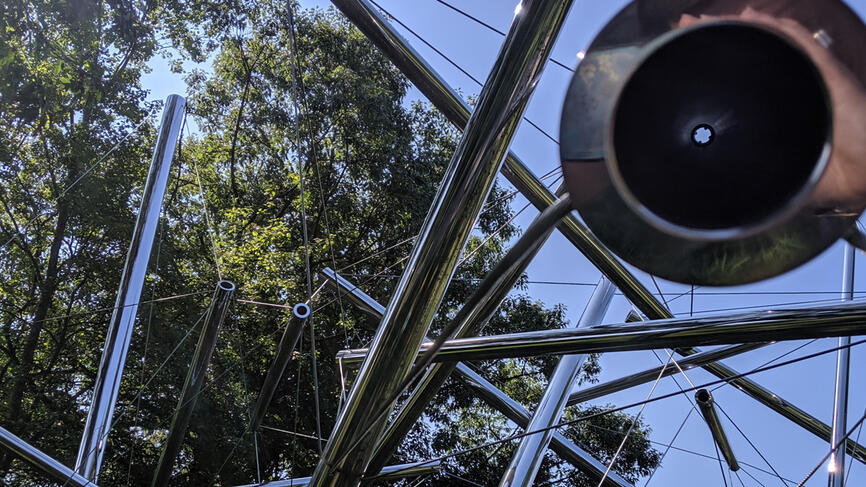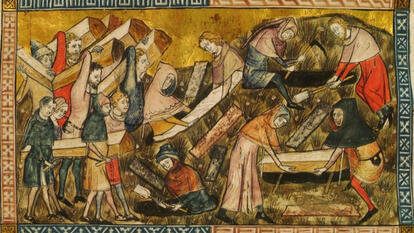Davis Intern Tour Features Art in Wellesley Landscape
On July 24, Wellesley’s Davis interns led the annual summer “Bark and Metal” tour. In brief presentations given along the tour, the student guides meshed art with nature in a way that gave context to features of the campus landscape that can be overlooked by students, faculty, and staff who hurry across the campus routinely, often unaware of the natural world.
They talked about the backgrounds of two campus sculptures, the artists who created them, and also the most prominent features of the surrounding environment—trees.
Started in 2014 by several Davis interns, the tour is collaboration between the Davis Museum and the Paulson Ecology of Place Initiative. The students “communicate a sense of place by sharing the wonder and magic of art and nature and a deeper window into the cultural and natural students encounter every day,” said Suzanne Langridge, director of the Paulson Initiative. The tour was sponsored by Wellesley’s Office of the Provost.

On the first stop on the tour, intern Irene Galarneau ’19 brought participants to the Shechinah Temptations sculpture in the Academic Quad. The rust-colored Shechinah Temptations is the work of the Russian-born American artist Jules Olitski. It was originally placed in front of Pendleton Hall and moved in 2013 when the ground under it began to sink. “Shechinah” is a Hebrew word meaning “the dwelling or setting of the Divine Presence of God,” explained intern guide Megan McNally ’20.
Galarneau describes the oak trees that tower over the area as they relate to the sculpture. The trees “call to mind antiquity, learning, and strength,” she said.

Davis intern Stephanie Fan ’22 explains the Kenneth Snelson sculpture, Mozart III, an angular matrix of polished stainless steel tubes joined by wire cables that stands on the path to the Science Center. Fan pointed out that Snelson named his work after Mozart “because of its attempt to balance the scientific, the musical, and the poetic…visually, it juts from the ground and extends in all directions.”
Several yards away stood several ginko trees that intern Galarneau described as “strong and very striking visually.” The trees are native to China and Korea and were also imported to Japan. Known to grow as tall as 100 feet, ginkos can be found on the grounds of Buddhist temples. Some that had been planted in Hiroshima, Japan, survived the atomic bomb. For that reason, “they have become a symbol of hope and resilience,” said Galarneau.

A close-up image captures the steel tubing of Mozart III. About its placement on the path between the Academic Quad and the Science Center, Fen said, “it seems to bring together the arts and humanities and science.”



